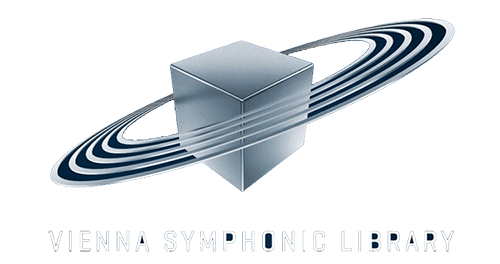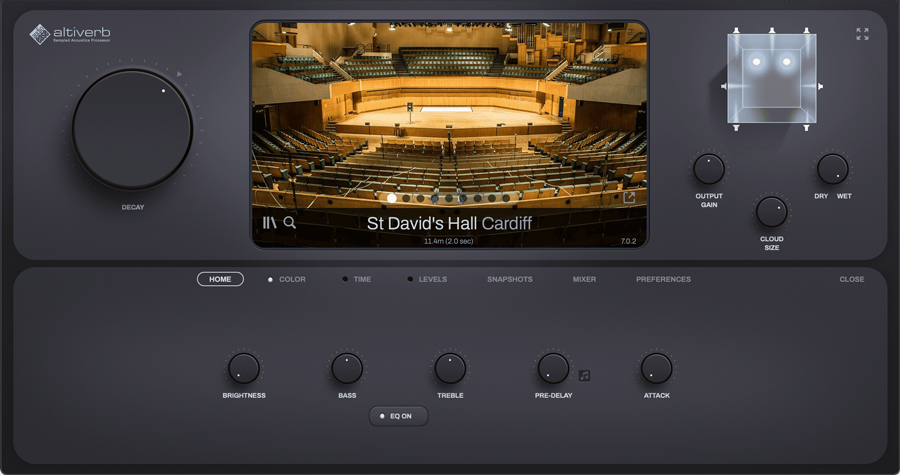News archive 2024
![]()
October 22, 2024
![]()
New in my synthesizer collection
(but not realy)
Arturia - PolyBrute 12
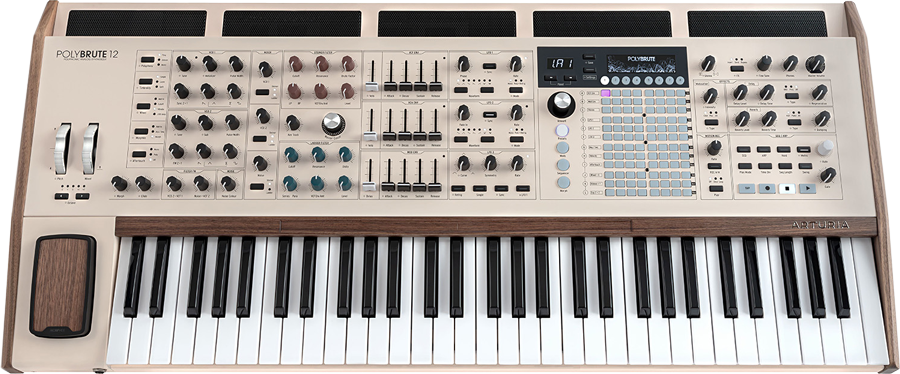
In my post from May 29, 2018 you can read about the purchase of my first big ARTURIA synthesizer, the majestic ARTURIA MatrixBrute...
In my post from Januari 03, 2022 you can read about the purchase of my second big ARTURIA synthesizer, the majestic ARTURIA PolyBrute!
And in this post you can read about the purchase of my 3rd big ARTURIA synthesizer, the even more majestic ARTURIA PolyBrute 12!
The ARTURIA PolyBrute 12 is the new showpiece of ARTURIA and is an extended version of the standard PolyBrute. They differ in only 3 areas:
1) the standard PolyBrute is 6 voice polyphonic, the PolyBrute 12 is... indeed 12 voice polyphonic, so it's literally 2 PolyBrutes combined. But technically, because this synthesizer can morph from one sound to another, so it's actually a 24 voice analog synthesizer.
2) the standard PolyBrute has a 61-key keyboard with duophonic aftertouch, the PolyBrute 12 has a completely new FullTouch® MPE keyboard, designed by ARTURIA itself, also with 61 keys with monophonic aftertouch + polyphonic aftertouch + 3 own modes that no other synthesizer has:
- Two Fase Polyphonic Touch
- Three Fase Polyphonic Touch
- Pizzicato Envelope Touch
Especially these last 3 modes offer unique possibilities, explaining all of this would take me too far here + it is already well explained on the website of ARTURIA (click on a mode and each time you will see an animation with an explanation) of bekijk deze YouTube video
3) the size of the instrument (23kg versus 20kg + it is also higher and deeper) + of course the very special design... This is a visual comparison between the standard PolyBrute and the new PolyBrute 12
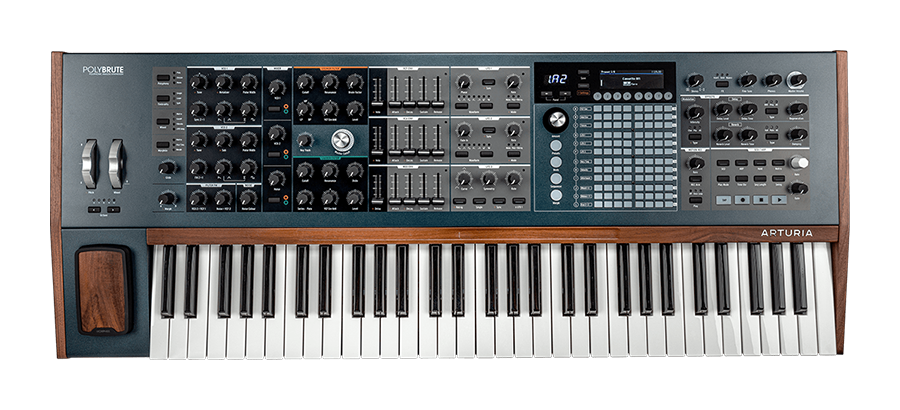
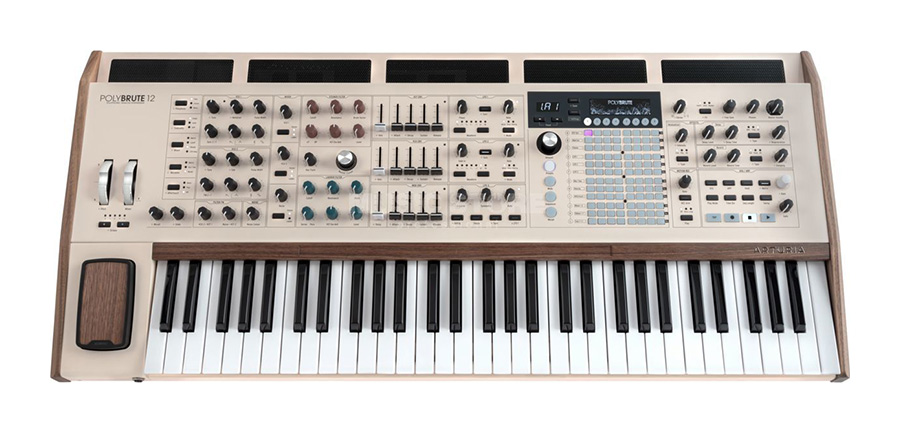
The attentive viewer will notice that there is only 1 extra button on the PolyBrute 12, namely on the left a fifth rectangular push button has been added to the row (to select the Aftertouch modes for the keyboard). On the standard PolyBrute the Glide button was there, this was placed just below it next to the leftmost Morph button. So it seems as if a rotary knob has been added there, but that is not the case. And to be completely correct, physically only the leftmost button has been added, so the Morph button was placed more to the left and in place of the original Morph button is now the Glide button.
Furthermore, the least you can say is that it is a strange choice of colour by the designers... The colour is supposed to be 'magnolia' or 'cream-coloured with a pinkish tint' but it turns out that there are different colours per country that bear the name magnolia depending on the type of magnolia (the plant) that grows locally and the amount of pink or purple tint in the cream-coloured petals.
And I have to admit, I belong to the group that finds the design hideous, the design really reminds me of a wall radiator with those 5 ventilation grilles at the back and the beige color:

Like many others, I had planned to wait for a dark version, even if I had to wait 1 or 2 years for it. Both the MatrixBrute and the standard PolyBrute also exist in a limited black version (Noir), so there is a good chance that a black PolyBrute 12 will also come onto the market. Although... because what turns out? The MatrixBrute Noir and PolyBrute Noir initially came onto the market at a more expensive price than the standard version, but over time that price dropped to a few hundred euros below the price of a standard version, so they are not very popular after all... But the color difference between a standard version and a MatrixBrute Noir or a PolyBrute Noir is of course much smaller than would be the case with a PolyBrute 12 Noir, because here it would really be a difference of day and night...
Anyway, I finally changed my mind and bought a PolyBrute 12 in the original color for the following reasons:
- I am a big fan of MPE and that new ARTURIA FullTouch® MPE keyboard with no less than 3 new modes stole my heart after watching some decent YouTube videos about it + the PolyBrute has been on the market for a few months now and the reviews are only positive, especially about the unique keyboard
- I am very satisfied with the general sound of the original PolyBrute and the morphing of one sound into another, but I still ran into that limiting 6-voice polyphony too much. So buying a PolyBrute 12 is actually the only logical way forward + in the 70s and 80s it was normal for a synthesizer to only have 5, 6 or in the best (and most expensive) case 8 voices, but today a 'flagship' polyphonic synthesizer with only 6 voices is difficult to justify
- and the color, well... it will certainly stand out well among all my dark synthesizers :-)
My original standard PolyBrute may be sold on www.tweedehands.be, but I am certainly not the only one there, because at the moment there are already 6 pieces for sale, probably all from people who want to buy a PolyBrute 12 or have already bought one. So here I still have to see if I will keep it in my possession for a while or if I will put it on the second hand market now...
And furthermore, the PolyBrute, whether it is the standard version or the PolyBrute 12, remains first and foremost a unique analog morphing synthesizer as explained in my post of Januari 03, 2022.
There are some digital synthesizers and plugins that can morph but the ARTURIA PolyBrute is still the first and only polyphonic, analog synthesizer that can do this. I am always amazed about the unique sounds you can make with it, but now without a 6-voice wall to crash into + with a unique FullTouch® MPE keyboard + the ribbon controller (circled in red) is still there, so the Vangelis in me is still happy too :-)
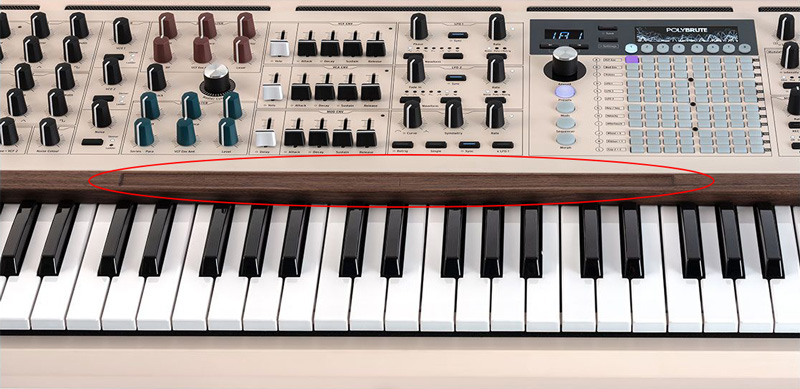
In short, it remains a unique design and it is actually quite special that there are quite a few people who, just like me, ultimately buy an ARTURIA PolyBrute 12 even though they really find it very ugly. For me this means that it must be a really special synthesizer... and I can only confirm that (and I say this as the proud owner of a very rare Baloran 'The River', see my post of May 05, 2019). Besides the expansion to 16 voices and the new FullTouch® MPE keyboard, it is mainly the unique analog morphing between 2 sounds that makes this synthesizer (and the standard PolyBrute) so special...
I already thought the standard PolyBrute was very good, but the ARTURIA PolyBrute 12 is for me by far the best analog synthesizer currently on the market and I'm certainly not the only one who thinks so, just read the professional reviews... And as for the new ARTURIA FullTouch® MPE keyboard: it is truly the most expressive MPE keyboard I have ever played (with the exception of my ROLI Seaboard RISE 2, see my post from March 23, 2023, but this MPE MIDI controller is actually not comparable to a standard piano-style keyboard as present on the PolyBrute 12)
And one more thing about the colour: on closer inspection it actually turns out to be better than I had feared, depending on the lighting conditions you actually notice a pinkish or purple tint, my 13 year old daughter, for example, thinks the pinkish tint looks like a strawberry ice cream with far too few strawberries in it :-)
But of course it is and remains a design clearly inspired by furniture from the 50s, especially if you take the optional legs into account (which also fit the original PolyBrute and the ARTURIA KeyLab 88). And on the wooden sides there are also pieces of black artificial leather (Tolex?), you can see it in the photo below, for me it really wasn't necessary. But in terms of design, for me a Roland JUPITER-8 is the pinnacle, so I have a soft spot for dark synthesizers with aluminum sides and hate synthesizers with a lot of wood in the housing, I've never found it attractive...

![]()
October 02, 2024
![]()
New in my collection
orchestral sample libraries:

VIENNA SUPER PACKAGE
's Werelds grootste database met orkestrale samples
Of course The Vienna Symphonic Library (VSL) is not entirely new to me as I have been using the 'Epic Orchestra Standard' since 2012 which came free with the purchase of 'Vienna Ensemble Pro' if I remember correctly + in 2020 I bought a license for the 'Vienna Dimension Strings I Full ibrary' from the 'Vienna Instruments Series Collections' (better known as the 'VI Series').
The VI Series have been the reference in the field of (stereo) orchestral libraries for over 25 years, of which the 'Symphonic Cube' was considered the Rolls-Royce in the VSL range for a very long time. This 'Symphonic Cube' with 10 VI Series cost around 10,000 euros 10 years ago.
The special thing about the VI Series is that they were recorded on the 'Silent Stage' of VSL with almost no natural reverb present in the recording room. This makes it easy to place the VI Series in any environment by artificially adding the reverb of a specific room. This can be a typical algorithmic digital reverb or a 'convolution reverb' that works with 'impulse responses' of real rooms. For 'convolution reverb' I always use AudioEase Altiverb XL:
I have always appreciated the 'dry' character of the VI Series, but... VSL has been working on a new orchestral library for about 10 years that is recorded on the new 'Synchron Stage Vienna'... and the reverb of the recording room is recorded with it. The new Synchron Series instruments do not sound as dry as the original VI Series and I find that a great pity because you can never remove that 'baked-in' reverb.
But I do understand why VSL does this because with the Synchron Series you get a realistic sound of an orchestra in an acoustic space much faster while this was not the case with the original VI Series because you first had to mix everything correctly yourself and add digital reverb to get a realistic sound of an orchestra in an acoustic space. I know that there were quite a few people who, after buying a VI Series instrument, were very surprised that it sounded so dry and direct and only then realized that they would first have to learn how to make a realistic orchestral mix in their DAW. Because on the VSL website all the listening examples of the VI Series of course all sound perfectly mixed + it were usually composers and arrangers who bought VI Series who historically had little to no knowledge about mixing a virtual orchestra in a DAW.
On the other hand, the Synchron Series is no longer just stereo but recorded with many microphone positions, making it suitable for immersive audio formats and therefore also in the Dolby Atmos Music format. So at first glance, the Synchron Series should be perfect for my applications, but I find the ever-present reverb of the Synchron Stage very annoying.
FYI: There are now also 'Synchron-ised' versions of the VI Series for use with the Synchron Series and what logically has been done: the reverb of the Synchron Stage has been added to the VI Series (but fortunately it can also be removed again because it is a convolution reverb with an impulse response from the Synchron Stage).
And what is now the most important news for me: VSL has decided to definitively discontinue the VI Series and not to develop them any further + the VI Series will also no longer be offered for sale on the VSL website. But in order to give the many owners of licenses for VI Series the opportunity to supplement or complete their collections, VI Series have been offered with a 50% discount since August 1, 2024. I really couldn't pass up that opportunity and I expanded my one 'Vienna Dimension Strings I Full Library' in one go to the complete 'Vienna Super Package' containing all available VI Series (= 31 VI Series instrumenten + 13 additional Single Instruments):
|
|
|
And if you further divide the above list into all available separately sampled instruments, this becomes the list below of 129 instruments (each containing many different articulations):
|
|
All together it's about 2,820,210 separate samples with a total size of 1 TB of sample data. I bought the sample data on a separate 'Vienna Hard Drive' so I didn't have to download that 1 TB + I already have an external backup available.
I honestly never thought I would ever own the licenses for the complete VI Series because once everything together cost more than 15,000 euros, now I paid less than a fifth of that price for them and they still sound as good as they did then!
Of course I realize that I haven't invested in the latest and greatest and perhaps should have gone straight for the much more recent Synchron Series, but... the Synchron Series really doesn't sound good to me. The Synchron Series suffers from the same problem that so many contemporary orchestral sample libraries have: they are mainly focused on achieving the sound of a Hollywood production soundtrack as quickly as possible. You can also notice this on the VSL website because under Music a list appears with 'Movie Masterpieces' that were mainly made with the Synchron Series and that sound very impressive indeed. But back in the heyday of the VI Series it was an impressive list of the great works of classical music that you got to hear (which you can still find via the Browse function on that same page). Or to put it another way: with the 'classical' VI Series I can, after some decent mixing, easily achieve the sound of a soundtrack for a Hollywood production, while with the Synchon Series achieving the sound of a classical orchestra is in my opinion much less obvious because before you know it you imagine yourself in a movie theater instead of a classical concert hall...
FYI: all the other orchestral sample libraries listed are also all 'dry', what did you expect? :-)
Ter info: alle andere orkestrale sample bibliotheken die op de lijst vermeld staan zijn ook allemaal 'droog', wat had je gedacht? :-)
![]()
July 06, 2024
![]()
There is a third DAW available in the studio...
And it's not exactly a small one!


Steinberg - Cubase Pro 13
Indeed, I have been working with Logic Pro and its predecessors for about 30 years and for more than 25 years with Pro Tools, why am I suddenly starting to use Cubase Pro as well? I hope I haven't suddenly become a big fan of Cubase, have I? :-)
Since the early days in the 80s and 90s there has been a great rivalry between Logic users and Cubase users and in fact this is still more or less the case today, for example there are very few people who use both Logic Pro and Cubase Pro. I am very clearly a fan of Logic Pro from the very beginning and probably always will be, so the above above about whether I have perhaps suddenly become a fan of Cubase is mainly meant rhetorically.
Although there are many professionals who use Logic Pro or Cubase together with Pro Tools because Pro Tools was originally first and foremost an audio program to which MIDI sequencing was added afterwards, while Logic Pro and Cubase Pro were originally MIDI sequences to which audio was added afterwards. So many professionals use Logic Pro or Cubase Pro to compose and arrange with MIDI data, then convert all the MIDI data to audio files and then go to Pro Tools to mix and finish everything there. And that's how I've been doing it since I can remember and I still do it because Pro Tools is unmatched when it comes to audio mixing.
So why am I suddenly adding Cubase Pro? As already mentioned in the post below on June 22, 2024 installers of AAX plugins for Pro Tools also install AU version for Logic Pro in 99% of cases and usually also a VST and/or VST3 version for Cubase. So I have about as many VST and/or VST3 plugins for Cubase as AU plugins for Logic Pro or AAX plugins for Pro Tools (and that is easily more than 1,000). Then I suddenly realized that this large number of permanently present but unused VST and VST3 plug-ins could be very interesting for Cubase users and I decided to also offer Cubase Pro from now on.
So I have absolutely no intention of dropping Pro Tools or Logic Pro and switching to Cubase Pro or something like that, because that would be very stupid of me after 30 years of working with Logic Pro and its predecessors and 25 years with Pro Tools, because that almost lifelong experience is irreplaceable and very valuable. I also don't plan to suddenly throw myself into Cubase Pro now because I have more than enough experience with DAWs to quickly find my way around Cubase Pro since the basic functions are more or less the same in all DAWs. Cubase Pro is now a third DAW that is available as standard in the studio as an extra service, so customers can easily open their Cubase sessions here and then use all my VST and VST3 plugins and virtual instruments within their familiar Cubase environment. Indeed, I work about 30 years with Logic Pro and its predecessors and more than 25 years with Pro Tools, why am I suddenly adding Cubase Pro? Maybe I have suddenly become a Cubase fan? :-)
And unlike the normal situation where customers here in the studio sometimes learn something about working with Pro Tools or Logic Pro, the roles may now be reversed and I can learn something from customers who come here to work with Cubase :-)

Btw, I didn't stop at the Cubase Pro 13 purchase:
A very well-known Steinberg VST3 plugin
for Cubase Pro (and also as AAX and AU plugin)


Steinberg - HALion 7 - Full version
HALion 7 is Steinberg's 'Sample and Synthesis Platform' and is comparable to, for example, the KOMPLETE platform from Native Instruments. HALion 7 contains 6 different forms of synthesis including FM, spectral synthesis, virtual analog and granular synthesis, a very extensive sampler, time-stretching, modulation, etc. The full version contains more than 35 GB of samples + 15 instruments + more than 70 effects.
Historically, the Steinberg universe has almost completely passed me by for the simple reason that I have never worked with Cubase + Steinberg is also the inventor of the VST plugins, while Pro Tools historically uses TDM, RTAS and AAX plugins and Logic Pro the standard Apple AU plugins. I was therefore very surprised that the HALion installer now (I don't know since when) also installs an AAX plugin and an AU plugin, making HALion 7 immediately available in Pro Tools and Logic Pro. It was therefore a very simple choice to immediately purchase HALion 7 together with Cubase Pro 13...

![]()
June 22, 2024
![]()
Adjustments to the website:
new pages for the equipment list
with plugins for Pro Tools and Logic Pro

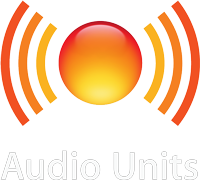
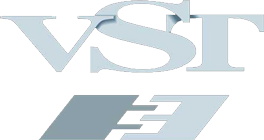
For many years there has been a page on my website with a list of almost all my plugins for Pro Tools, each with an image of the mentioned plugin or plugin bundle. Plugins are indispensable for a DAW and I have always found it very important to know which plugins are available in a studio, hence the extensive list.
Over time, however, 'extensive' started to take on a somewhat extreme form with the listing of more than 900 available plugins, making the page very clumsy. Some time ago I tried to solve this problem by dividing the list alphabetically with separate A • B • C links at the top of the page that allow you to immediately scroll to the desired letter.
But since upgrading to the Apple Mac Pro (2019), I have much more additional native computing power outside the Pro Tools | HDX DSP cards, so I bought a lot of plugins, which made the list even longer + I also bought plugins that do not work exclusively in Pro Tools (AAX Native and AAX DSP plugins) but only in Logic Pro (AU plugins). By the way, installers of AAX plugins for Pro Tools also install AU version for Logic Pro in 99% of cases and usually also a VST and/or VST3 version for Cubase. So of most plugins I have versions as AAX Native plugin + AU plugin + VST and/or VST3 plugin + and some AAX Native plugins I also have as AAX DSP plugin exclusively for use with the Pro Tools | HDX DSP cards.
In summary, the list on the website kept getting longer and longer, leaving me with little choice but to split the list into separate lists per function. I also changed the name of the page from 'Pro Tools plugins' to 'DAW - Plugins' and there you end up with the following division into 5 separate groups:
General plugins for mixing en mastering
in stereo and 5.1 surround
Effects plugins for stereo and 5.1 surround productions
Plugins for Dolby Atmos Music productions (7.1.2 to 9.1.6)
Virtual instruments + synthesizers
+ samplers + drum machines
Virtual guitar amplifiers and effects
On each page there are still separate A • B • C links at the top with which you can immediately scroll to the desired letter, but the letters that do not (yet) contain plugins are now colored gray and are not linked to the respective letter.
And also very important, I have also mentioned it separately on each page:
All plugins listed have permanent licenses that were officially purchased, so no licenses are rented temporarily
There is only one exception and these are the Roland Cloud plugins under 'Virtual instruments' because Roland Cloud does not provide permanent licenses. Here I am very reluctant to join a Roland Cloud Ultimate membership membership because you have little other choice if you want to be able to use the Roland Cloud plugins.
![]()
April 24, 2024 (updated on May 23, 2024)
![]()
A new modular digital brain
and a can of fresh memory for the studio
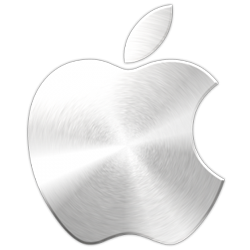
Apple - Mac Pro (2019)

In the post below from April 10, 2024, someone who is somewhat familiar with Apple computers could quickly deduce that the 15 dots belong to the housing of a Mac Pro (2019) or a Mac Pro (2023). I had edited the photo below with Photoshop to only include the dot pattern, which was also very beautiful graphically.


The Mac Pro (2019) indeed suddenly fell out of the sky on my birthday around 3 am. I watched a YouTube video by Mac Sound Solutions who, like me, works with Pro Tools on an old Mac Pro (Mid 2012) with OpenCore Legacy Patcher to use macOS Ventura. He mentioned in that video that the day before he was able yo buy a new Mac Pro (2019) for USD 2,099.00. This involved a stock sale by Meta (Facebook), which sold several hundred brand new Mac Pro (2019) through an external company, the aluminum casing has the Facebook logo etched in it somewhere. A few days after the video, the price had also risen to USD 3.000,00 because the external company had found out that they were selling out very quickly (the law of supply and demand in full action).
They were sold in the USA, so just shipping and importing a Mac Pro (2019) would be a very expensive undertaking, so I didn't look for it... But suddenly I thought of looking into it at a local website with second hand goods to see if there might be a Mac Pro (2019) for sale there... and suddenly there it was: an Mac Pro (2019) as good as new for... 3.000,00 euro! It was an Intel Xeon 3,2 GHz 16-core processor including 96 GB RAM, 2 additional graphic cards anf 5 TB SDD internal storage, all in as good as new condition (which was actually the case afterwards, see further). That night I immediately informed the seller that I wanted to buy it and the next morning on my birthday I received the confirmation including a signed sales agreement, I couldn't believe my luck.
I was on holiday at the seaside at the time and it wasn't until Sunday April 14 that I was able to pick it up from the seller on my way back home. Everything was in the original packaging, even the anti-static bags for all RAM modules were neatly kept. It was immediately very clear that the seller was in good faith and later I was able to use the serial number to find out that the Mac Pro (2019) was only purchased in February 2022 and is therefore just over 2 years old. But the seller also said that it was only for home use and that he had barely used the Mac Pro (2019) because it does almost everything on a MacBook Pro. And when I opened it for the first time at home, this was also confirmed, there was a little bit of dust on 3 large fans and everything else internally was completely dust-free in a way that you cannot achieve by vacuuming without completely dismantling the computer (which also showed no traces). I also tried to find out how much the Mac Pro (2019) must have cost new and I quickly came to over 20,000.00 euros + considering its almost new condition, 3,000.00 euros was really a very good deal because normally a second-hand Mac Pro (2019) with Intel Xeon 16-core processor (or higher) starts from 5,000.00 euros (without a lot of extra parts as was the case here).


Last week, step by step and neatly planned, I dismantled my current Mac Pro (Mid 2012) with Digidesign EB7 PCIe Expansion Chassis and migrated everything necessary to the new Mac Pro (2019). The Expansion Chassis housed my 3 Pro Tools HDX cards as shown here :
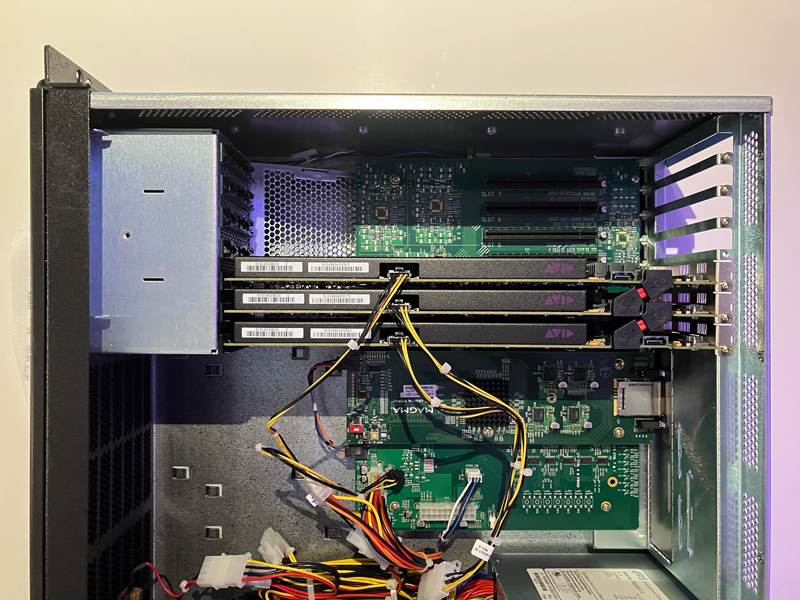
I was able to transfer these cards very easily to the Mac Pro (2019):
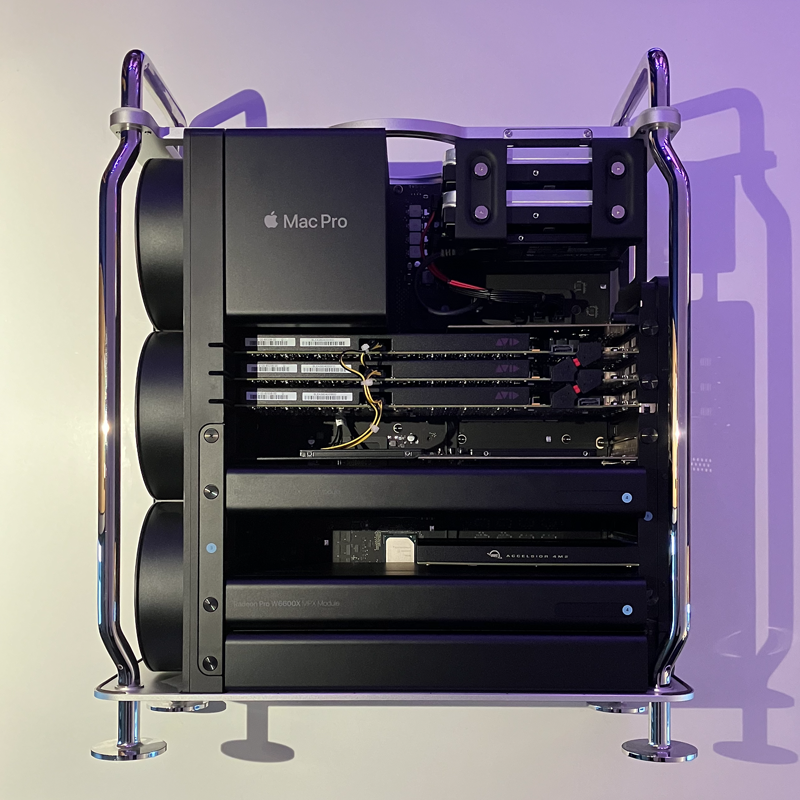
Btw, a fun fact: there is no cable in the entire Mac Pro (2019), all parts click and slide together with contacts that touch each other. So the cables you see in the photo above are cables that only serve to connect and/or supply power to the extra installed components to and from the motherboard. And in this YouTube video you can see how a Mac Pro (2019) is technically put together, it is really impressive Apple 'over-engineering'...
An overview of what was installed:
- at the top right is a Sonnet Fusion Flex J3i bracket mounted containing 2 x 20 TB SATA 3.5" HDDs (configured as a RAID1 volume of 20 TB) and a 2 TB SATA 2.5" SDD
- the small PCIe card underneath is the Apple I/O card that is standard in a Mac Pro (2019) with a headphone connection, 2 x Thunderbolt 3 and 2 x USB 3 connections
- the 3 AVID Pro Tools HDX PCIe cards are installed underneath
- a Sonnet Tempo SSD PCIe card with 2 x 4 TB SATA 2.5" SSD mounted on it
- the first Apple Radeon Pro W6600X MPX Module (graphics card) with 8 GB GDDR6 VRAM and 2 x HDMI connections
- an OWC Accelsior 4M2 PCIe card with 4 x 1 TB M.2 NVMe SSD (configured as a RAID5 volume of 3 TB)
- the second Apple Radeon Pro W6600X MPX Module (graphics card) with 8 GB GDDR6 VRAM and 2 x HDMI connections
And at the back this looks like this:
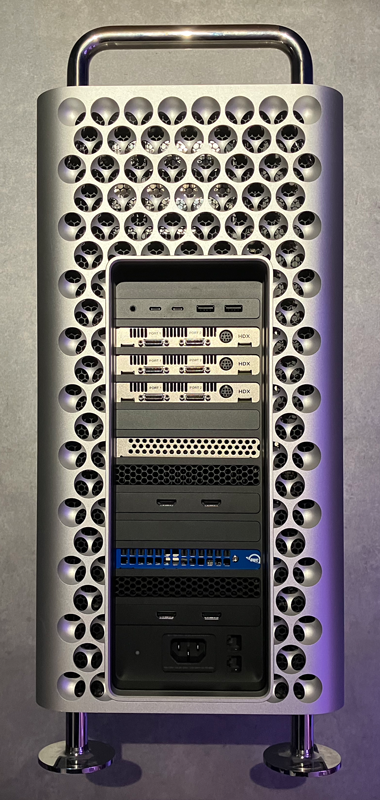
For the sake of completeness, this Mac Pro (2019) originally included an Apple Radeon Pro W5700X MPX Module (graphics card) with 16 GB GDDR6 VRAM with 1 HDMI connection and 4 x Thunderbolt 3 connections (I actually paid an extra 100.00 euros for this, so the total price was 3,100.00 euros for everything). But it takes up one and a half times the space of a standard MPX module, which covers a PCIe slot and therefore makes it unusable + that card is really much too powerful for my applications (standard HDMI 1080p). But if necessary, I can still replace 1 or both of the installed Apple Radeon Pro W6600X MPX Modules with 8 GB GDDR6 VRAM with this graphics card.
Furthermore, it also contains an Intel Xeon 3,2 GHz 16-core processor (with Turbo Boost up to 4.4 GHz) and 12 x 8 GB 2,933 MHz DDR4 ECC DIMMs for a total of 96 GB RAM (this can be expanded for this 16-core model to a maximum of 12 x 64 GB = 768 GB)can still be expanded to a maximum of 12 x 64 GB = 768 GB). And it also contains 2 x 512 GB Apple RAM modules for 1 TB of internal SSD storage that is linked to the Apple T2 security chip, this SSD is used to install the macOS and that is currently the most recent macOS Sonoma 14.4.1. In other words, I no longer need OpenCore Legacy Patcher to keep up with macOS.
And it also included a wireless Apple Magic Keyboard with Numeric Keypad (silver with black keys) and a wireless Magic Mouse 2 (also silver with black), both unopened because the seller was not using them. And I don't plan to do that because I use EditorsKeys AVID Pro Tools keyboards with backlit keys via USB in the studio.
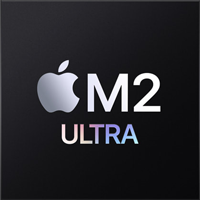
And then of course there is the elephant in the room that I haven't said anything about yet: why didn't I buy a new Mac Pro (2023) with the Apple M2 Ultra processor?
I'll list it briefly:
1) First and foremost the price because a Mac Pro (2023) costs between 8,399.00 euros and 14,579.00 euros, depending on the chosen configuration. But the Mac Pro (2019) cost in 2019 (or more correctly in 2020 because it only came on the market in December 2019) depending on the chosen configuration between 8,000.00 euros and 53,000.00 euros...
2) Even though the Mac Pro (2023) looks exactly the same as a Mac Pro (2019) at first glance, it is much less modular than a Mac Pro (2019), for example you cannot upgrade a processor or upgrade a graphics card (you can't even install the MPX modules of the Mac Pro (2019) in it), no expanding RAM, etc... So the way you configure your Mac Pro (2023) when you purchase it is how it will always be, just as it is the case with a Mac Studio, Mac mini, MacBook Pro, etc... With this Mac Pro (2019) I can still upgrade to an Intel 2.5 GHz 28-core processor (with Turbo Boost up to 4.6 GHz) if desired, maximum 1,5 GB of RAM and as many graphics cards as can physically fit in it.
3) The Apple M2 Ultra processor is of course much more powerful than the Intel Xeon 3,2 GHz 16-core processor in my Mac Pro (2019), but I am a big fan of Pro Tools HDX hardware with AAX-DSP plugins, so I simply don't need all that extra native computing power. My old Mac Pro (Mid 2012) only has an Intel 3.66 GHz 6-core processor and it has never let me down in 13 years. So I think this 16-core will last me a while...
4) If you switch to the Apple Silicon processors such as the M1 and M2, all software must be specifically adapted for use with Apple Silicon and in my case this means that I can no longer use a lot of older software and plugins
5) The Mac Pro (2019) was only replaced by the Mac Pro (2023) in June 2023, so my Mac Pro (2019) was sold new less than a year ago, so it is not that old of a computer + macOS Sonoma still supports it still. But this is of course the big question: how long will Apple continue to support the Mac Pro (2019) (and Intel processors in general)? Because Apple naturally wants everyone to use Macs with Apple Silicon processors. I hope that at least the upcoming macOS will continue to support the Mac Pro (2019) since it was available for purchase new a year ago. But if this is not the case... then I will get back to work with OpenCore Legacy Patcher and I may continue for many years to come, because my old Mac Pro (Mid 2012) currently works fine with macOS Sonoma 14.4.1 via OpenCore Legacy Patcher. and is already 12 years old.
6) And lastly, but I have only known this for a few days now, there are very reliable rumors going around that Apple will continue to offer the Mac Pro with an M4 Extreme processor specially developed for the Mac Pro (the 'M4 Hidra' chip) and this would already be on the market in the second half of 2025. So investing in a Mac Pro with an M2 Ultra processor at new price may not be the smartest thing to do...
In any case, 2 weeks ago I thought I would continue with my old Mac Pro (Mid 2012) and OpenCore Legacy Patcher for a few more years, now I suddenly have a well-developed Mac Pro (2019) that is completely up to date, I can only but very happy with it :-)
Addition on May 23, 2024:
I have owned the Mac Pro (2019) for a month now and it really is a beautiful machine! As expected, it is much faster and more powerful than my old Mac Pro (Late 2012), but I have already experienced that the 96 GB RAM it contains will not be sufficient in the long term. Of course this is because with a 16-core processor you can use many more computer programs at the same time (all of which require their own piece of RAM) than with the 6-core processor in my old Mac Pro (Late 2012). But I especially think about the large sample libraries that I have where I can now use many more instruments at the same time than was previously the case and and then the 96 GB of RAM will quickly be filled up.
The Mac Pro (2019) came with 12 x 8 GB DIMM when purchased and it is recommended to install the same DIMMs in all 12 RAM slots for best performance, so these are the possible configurations:
- 12 x 8 GB DIMM = 96 GB RAM
- 12 x 16 GB DIMM= 192 GB RAM
- 12 x 32 GB DIMM = 384 GB RAM
- 12 x 64 GB DIMM = 786 GB RAM
- 12 x 128 GB DIMM = 1.536 GB RAM (but this is only possible in a Mac Pro (2019) with a 24-core or 28-core processor)
For a Mac Pro (2019) with a 16-core processor, the maximum amount of RAM that can be installed is 768 GB, so only the first 4 options are possible. The larger the DIMM, the more expensive, so I did a cost-benefit analysis which showed that 12 x 32 GB DIMM = 384 GB was the most economical choice + the chance of completely filling 384 GB of RAM is very small for music productions, so 12 x 64 GB = 786 GB would really be way too much.
So as of today there is 386 GB of RAM in my Mac Pro (2019), I think it is now all set and ready for many more years of music enjoyment.
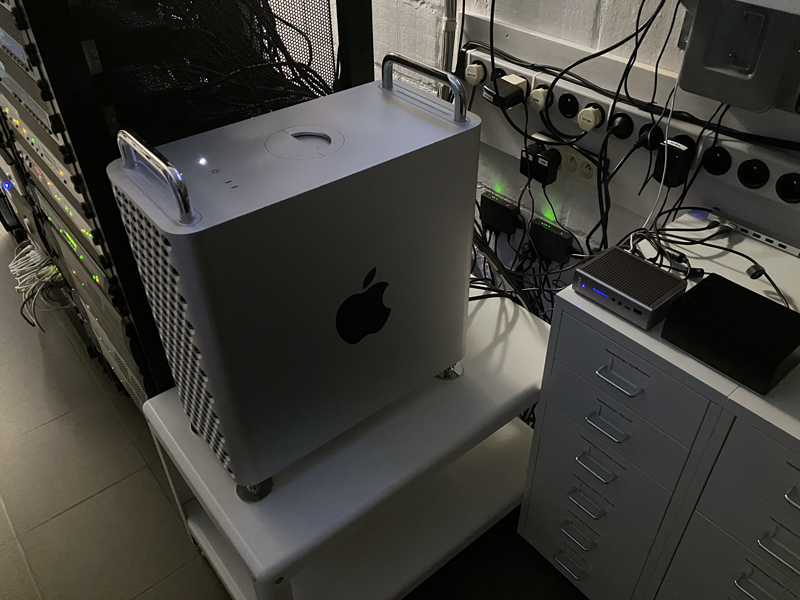
![]()
April 10, 2024
![]()
Today was my birthday...
And completely unexpected...
A beautiful birthday present fell from the sky...

![]()
February 09, 2024
![]()
The hardware and software upgrade from
surround 5.1 to Dolby Atmos Music 9.1.6
has been completed!

In my post of December 13, 2023 you can read about the hardware monitoring upgrade from surround 5.1 to Dolby Atmos Music 9.1.6 by adding 10 extra Genelec 'The Ones' speakers.
Today I can proudly announce that all software upgrades have been carried out and that the website has been completely adjusted!
But it wasn't the software update that took a lot of time, it was mainly adapting the website in 3 different languages and taking new photos that took a lot of time because I do all of this myself. And this is not so exceptional since I occasionally also design websites, logos and graphic house styles for non-commercial purposes via Delta Graphic Belgium.
Logically, I also adjusted the Delta Music Belgium logo, below you can see the old logo followed by the new logo:
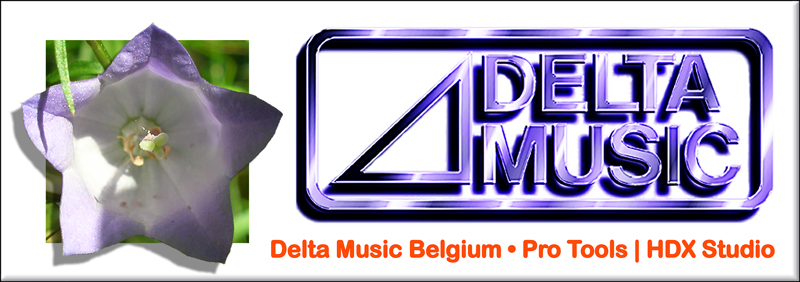

First and foremost there is the textual change of 'Delta Music Belgium • Pro Tools | HDX Studio' to 'Delta Music Belgium • Dolby Atmos Music Studio'. Although the studio still has the same Pro Tools | HDX Studio is because of the Pro Tools | HDX hardware, nothing was changed other than adding 2 extra Avid HD audio interfaces.
The background of the new logo has been changed from completely white to a color gradient from white to a very soft purple shade, which better highlights the white glittering parts of the original Delta Music logo from 1999. This is that original logo:
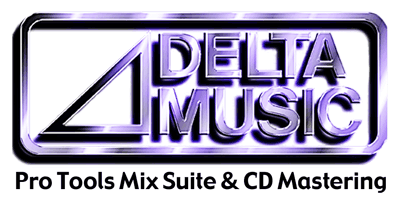
(more information about the history of the Delta Music logo can be found in my post of July 3, 2006)
The soft rounded gray frame around the old logo has been changed to a sharper, more angular version that looks a bit more 3D. At the bottom the frame also has a color gradient, but from gray to gray with a purple tint (the bottom is the shadow side), the right side is pure purple and at the top the frame is completely white (the top is the exposed side). But the top also gives the idea of a color gradient from white to white, but this is an optical illusion due to the color gradient of the background from white to the very soft purple shade.
Many texts have of course been changed on the website, but visually the change in color of the font is of course the most striking. That color is the same color as the very soft purple shade of the background of the new logo, fits nicely with the background of the website and also makes the pages a bit softer to the eye. Because the font color is no longer white, all the white logos used here and there on the website also stand out better, links in texts stand out better and the large titles are also much clearer.
But the most important news is and remains that at Delta Music Belgium you can now mix in Dolby Atmos Music with 9.1.6 listening with 16 real speakers (actually there are 17 because there are 2 subwoofers). For example, there are not many studios in Belgium and certainly not at the project studios because if they mix in Dolby Atmos Music there, this is either with headphones or with a standard Dolby Atmos home theater system... And therefore not with a professional digital 9.1.6 listening consisting of 15 Genelec 'The Ones' speakers with an 'equidistant' layout in which all speakers are placed or suspended at an equal distance from the center of a circle (the listening point) + which is also fully calibrated according to the requirements of Dolby Professional...
More information about Dolby Atmos Music and the technical side of things can be found in the first 3 frequently asked questions and in the equipment lists listed below:
And some more photos!
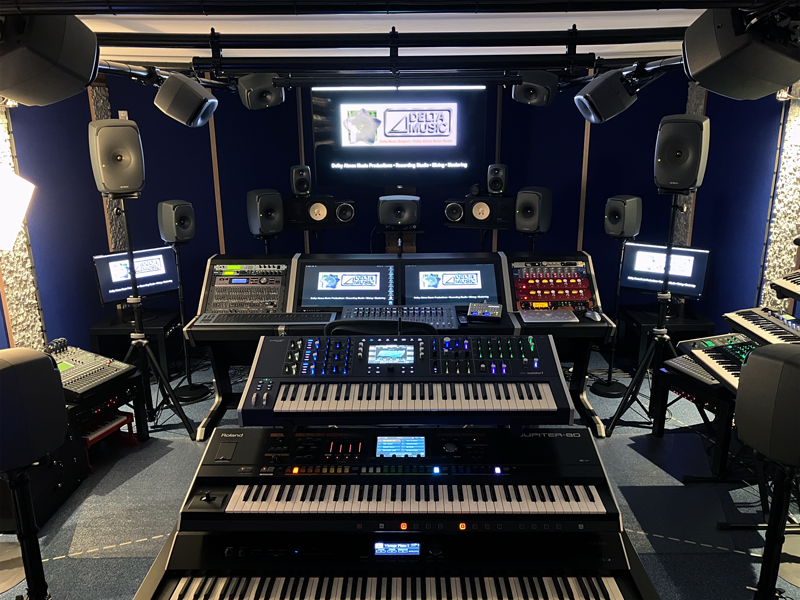

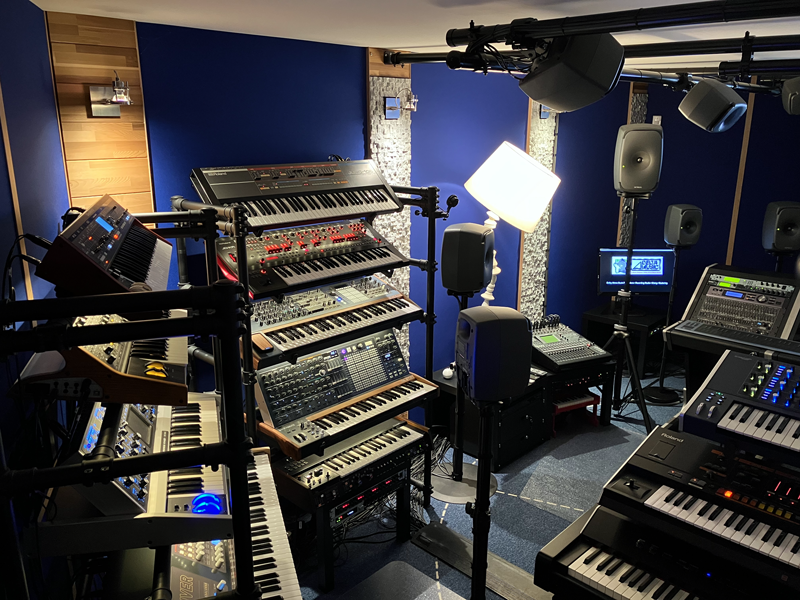
Btw, I took the opportunity to update all the photos from the studio, you can find them via:

![]()
January 11, 2024
![]()
New in my synthesizer collection:
Behringer - solina String Ensemble
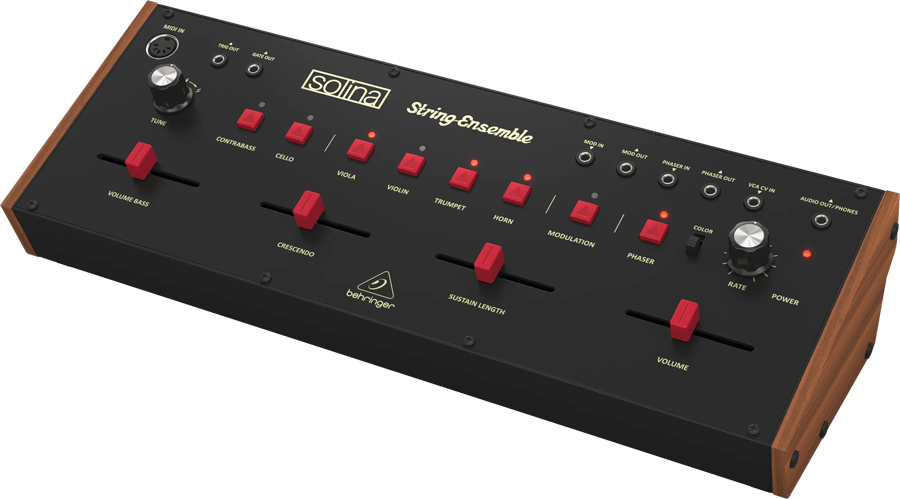
In my post of June 28, 2019 about my purchase of the Behringer Vocoder VC340 you can read that Behringer then made a copy of the Roland VP-330 Vocoder Plus mk2 from 1980, but a bit smaller and more modern (e.g. with MIDI and USB). The Behringer Solina String Ensemble is a similar story because this is a copy of the Eminent Solina String Ensemble from 1974, also better known as the ARP Solina String Ensemble because ARP distributed it in the USA from 1974 to 1981:

The Behringer Solina String Ensemble, just like the Behringer VC340, is an analog 'stringer' (the VC340 is also a 10-band vocoder) that uses a 'divide-down oscillator' (49 voices) and also a built-in Ensemble effect (chorus). ) for which analog BBD (Bucket Brigade Device) chips are used. Furthermore, there is also a copy of an Electro Harmonix Small Stone phaser and that is not just... (see below). What is clearly not included is a keyboard, because the Behringer Solina String Ensemble is a desktop module that must be controlled via MIDI or USB.
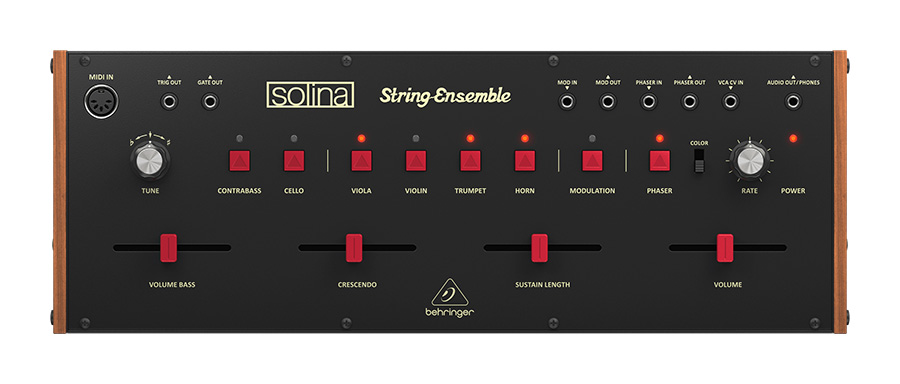
The original designer Eminent is a Dutch manufacturer of electronic organs. The best-known organ at the time was the Eminent 310 Unique from 1972 and it contained the first version of the analog 'string section' with 'divide-down oscillator' for imitating string instruments and from this the Eminent Solina String Ensemble was later derived :
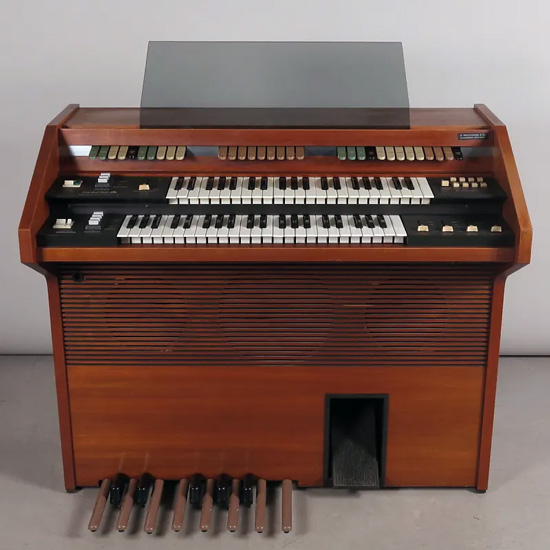
However, in the 1970s a Frenchman had the brilliant idea to combine the Eminent 310 Unique organ with an Electro Harmonix Small Stone phaser effect pedal...
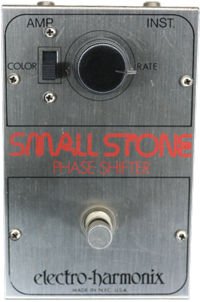
He then made an album in 1976... and another in 1978... and it made him world famous...
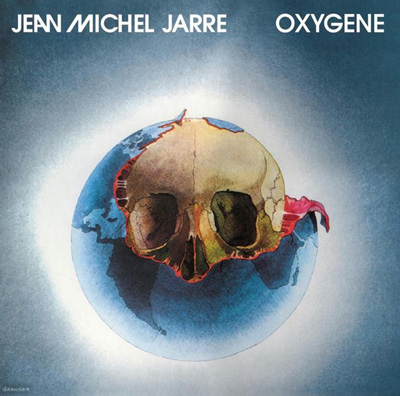
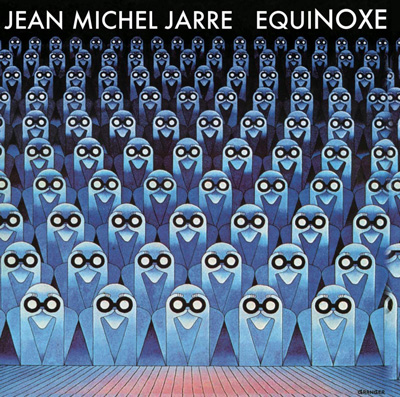
The floating string sound on both albums is very typical and unique, which is why Behringer immediately built a Small Stone phaser into the Behringer solina String Ensemble for instant Jean-Michel Jarre 'out of a box'! And this is really true, before you know it you have that typical Jean-Michel Jarre stringer sound that you can dream away to...
I have the Behringer solina String Ensemble in the studio for several weeks now and together with the Behringer Vocoder VC340 it forms a nice duo that covers almost the entire spectrum of analog stringers, with those typical timbres from the 70s. you can't find anywhere else than with 'divide-down oscillators'...
Btw, about 5 years ago I had the opportunity to buy an Eminent 310 Unique organ around here, it was in perfect condition and only cost 100.00 euros. Until it turned out that the organ was located on a third floor and weighed more than 100 kg + I also had to move it myself, so I let that pass me by. And you can't just put such a heavy organ aside in the studio, so it wouldn't have been very useful either. By the way, I have also seen them offered for free in the Netherlands, the only requirement is that you always come and pick them up yourself. And then you should know that when Jean-Michel Jarre performs the album 'Oxygene' live, he (read: his technicians) usually brings along about 5-6 of them, of which 4 are always on stage...
![]()

![]()
![]()
Copyright © 1995-2025 by Delta Music Belgium • Dolby Atmos Music Studio • Rummenweg 30 • 3800 Sint-Truiden • Belgium
All Rights Reserved
Privacy notification and cookie policy
All product names, logos, and brands are property of their respective owners.
All company, product and service names used on this website are for identification purposes only.
Use of these names, logos, and brands does not imply endorsement.
![]()


